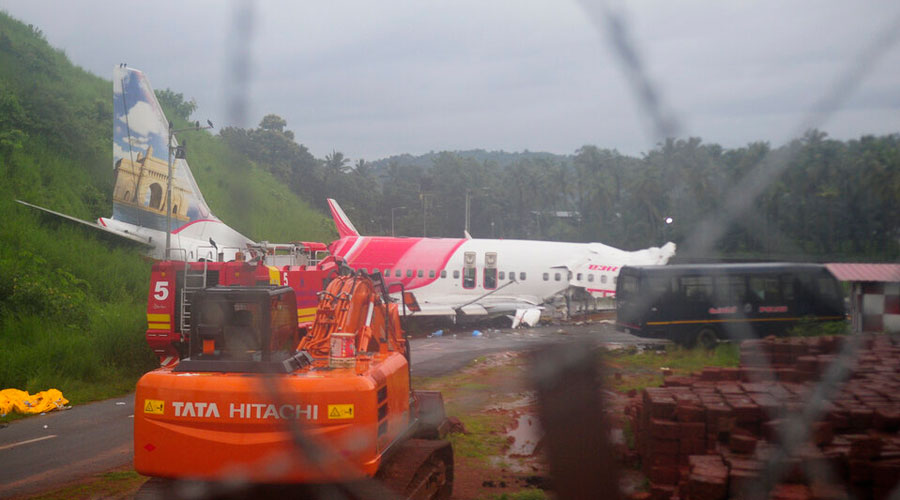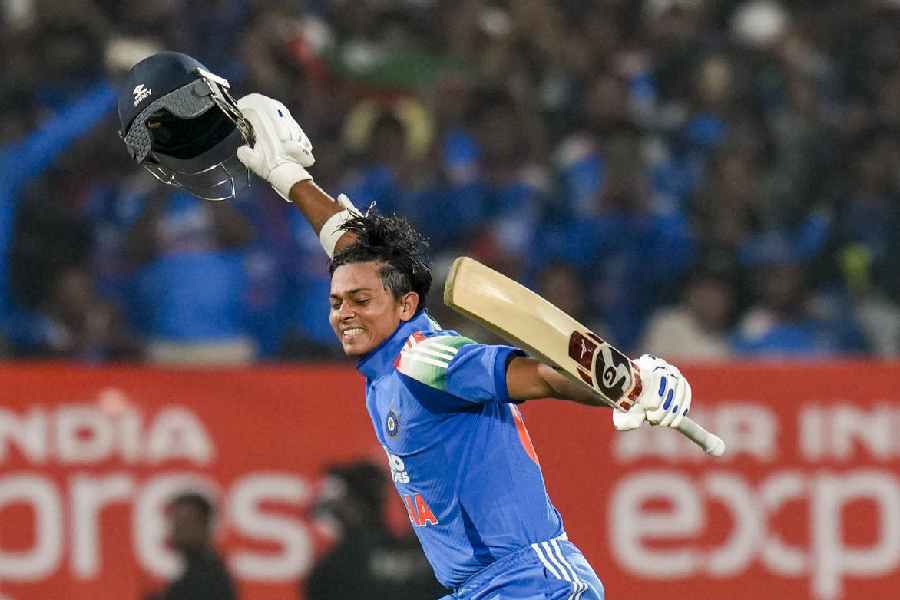The Air India Express Boeing 737-800 that overshot the tabletop runway at Calicut International Airport on Friday had already passed the first 1,000 metres of the runway when it touched down, sources in the directorate-general of civil aviation said.
Such a landing spot would have shortened the available stretch of runway by more than a third for the flight from Dubai, which dropped around 60 feet after skidding off the wet strip, killing 18 people including both the pilots.
Aviation authorities are now looking into whether the remaining length of the runway was sufficient for the aircraft, which landed in windy and rainy conditions, to have stopped safely. What is clear is that the runway was wet, which would have affected the efficacy of the aircraft’s braking system, officials said.
Union civil aviation minister Hardeep Singh Puri said the reasons for the accident were being investigated and that it would be premature to speculate on the precise cause.
“The media is full of speculation — that he made two attempts to land... or if it was wind or rain (that caused the accident). First, let us try to get the facts correct. Let the facts come out,” he said.
An Airport Authority of India (AAI) source said the length of Runway 10 — on which the plane landed — was “more than sufficient” despite being shortened two years go.
“We shortened the runway from 2,860 metres to 2,700 metres (about 8,860 feet) two years ago. This has made the Runway End Safety Areas 240 metres long on either end of the runway. It is more than sufficient according to the International Civil Aviation Organisation’s norm.”
An AAI spokesperson said the plane was scheduled to land on Runway 28 but the pilot could not sight it because of the rain in the first landing attempt and requested the use of Runway 10.
Citing information from the air traffic controller, the spokesperson said the plane touched down near Taxiway C, which is approximately 1,000 metres from the beginning of Runway 10. He added that the visibility at the time of landing was 2,000 metres.
The New York Times reported that “with the crash investigation just starting, Indian aviation officials are already beginning to pin the blame on the pilot, not the runway”.
“The basic problem, as we understand it in this incident, is that on a runway of 8,500 feet, the plane landed after crossing one-third of the strip, beyond 3,000 feet,” the newspaper quoted director-general of civil aviation Arun Kumar as saying.
“What normally happens under such conditions is that the pilot does a go-round and either tries to land again or not land at all, given the weather conditions. Touchdown must happen within the first 500 feet of the strip. The rules of aviation are too well laid out. Either the pilot goes around or should not have landed at all.”
Puri said the aircraft’s black box and cockpit voice recorder had been found. A black box or flight data recorder logs the various parameters of the entire flight while the cockpit voice recorder can reveal the conversations between the pilots.
“I’m confident that before long we’ll find out what happened in the last few minutes of the flight,” Puri told reporters in Karipur, where the airport is located.
He tried to assuage fears about tabletop airports, one of which — in Mangalore, Karnataka — had in May 2010 seen a plane skid off it and kill 158 of the 166 people on board.
“Tabletop airports are there in many places in the world... (including) our neighbouring countries. The flights operate with pilots who have the necessary experience,” Puri said. He said the captain of Friday’s flight, Deepak Vasant Sathe, had landed at Calicut International Airport 27 times. “He was a very experienced and highly decorated pilot,” Puri said.
Sathe had retired as an air force wing commander before joining Air India.











